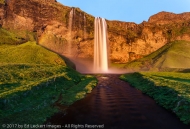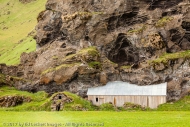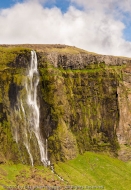


Water. It is essential for life on our planet, and yet it can ruin your day, or your life, in an instant.
In 2005, my native city of New Orleans was ravaged by Hurricane Katrina, now a household word here in the U.S. Here in Washington State, debris continues to wash up on the shores of the Pacific Ocean from the devastating tsunami in Japan in 2011. One of my favorite books about the desert, The Secret Knowledge of Water, puts it this way: “There are two easy ways to die in the desert: Thirst and Drowning”. In fact, just last September seven people lost their lives in Zion National Park to a flash flood in a slot canyon.
This is nothing new, of course – people have been dying in floods since before the time of Noah. But today I’d like to tell you a story you may not have heard, one I found out about on my recent road trip to New England. I already wrote about the amazing little canal-railroad hybrid, the Allegheny Portage Railroad, in a previous article. The railroad, you might remember, was part of the Pennsylvania Mainline Canal from Philadelphia to Pittsburgh, built to compete commercially with New York State’s successful Erie Canal system.

“Pennsylvania canals” by Finetooth, Ruhrfisch, U.S. Census – Licensed under Public Domain via Commons
Well, the Pennsylvania canal’s Western Division had its eastern terminus at the town of Johnstown, Pennsylvania (see the lower left area in the image above). During the canal’s first year of operation in 1934, it was discovered that commerce might be impacted during drought conditions, so it was decided to build the South Fork Dam to create the Western Reservoir as a canal feeder. The canal was started in the early 1840s on the Conemaugh River above Johnstown, but due to a number of issues was not completed until 1852, five years after the half-completed dam had already failed once.
Only two years later, the Pennsylvania Mainline Canal for which the reservoir was built went out of business! So, the Pennsylvania Railroad bought the entire route of the Pennsylvania Mainline Canal, including the South Fork Dam, but didn’t maintain it properly, so it failed again in 1862. This time the water level in Johnstown increased by a couple of feet, an inconvenience perhaps but not a tragedy.
The canal that the reservoir supported was closed, so it was no longer needed, but US Congressman John Reilly bought the dam in 1875, made some unfortunate modifications to it, and then sold it to a representative of the South Fork Fishing & Hunting Club of Pittsburgh, with members made up primarily of steel, coal, and railroad executives. The club made some weak efforts to patch holes from the 1862 failure and made other poor choices such as lowering the top and putting fish screens in place, guaranteeing that during heavy rains the dam would eventually be over-topped.
In 1889, the inevitable happened. The dam failed, sending 3,600,000,000 gallons of water (yes, that’s billion) rushing towards Johnstown. By the time it was over, 1,600 homes were destroyed and 2,209 people were dead. That’s more than were killed by Hurricane Katrina! Of course, the parallels are hard to ignore: shoddy engineering, shoddy construction, bad decisions, and poor maintenance while gambling with the incredibly powerful forces of nature.

“Below dam looking up through Gap, from Robert N. Dennis collection of stereoscopic views” by Unknown
Here’s an interesting Did You Know? from the Johnstown Flood National Memorial website:
Before the flood hit East Conemaugh, train engineer John Hess tried to warn the residents by tying his train whistle down and racing to town ahead of the wave.
The flood also marked the first opportunity for the newly formed American Red Cross to perform their first domestic disaster relief effort. On June 5, 1889 Ms. Clara Barton, the founder and president of the American Red Cross arrived to lead relief efforts.
As you might expect, the town sued the members of the South Fork Fishing and Hunting Club. And as you might further expect, they weaseled out of any responsibility. Local courts deemed the disaster as an “Act of God” rather than the inevitable result of carelessness and callousness – shocking, I know.

Interesting fact about the Johnstown Flood.
As a result of the damage from the 1936 Johnstown, PA flood, the Pennsylvania General Assembly imposed an emergency tax on all alcohol sold in the Commonwealth. The “temporary” 10% tax was initially intended to help pay for clean up, recovery, and assistance to flood victims. Though the recovery was assisted by the federal government and completed within six years of the disaster, the tax was never repealed. The tax was raised to 15% in 1963 and to 18% in 1968, where it stands today.
Brutal. And classic. No shortage of businesspeople willing to drown a couple thousand townfolk for a buck. Presumably *their* family lived elsewhere!
The founders and top dogs lived with their families in Pittsburgh.